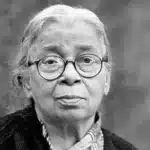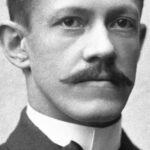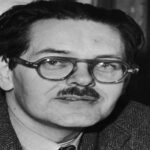Frank Sherwood Rowland (28 June 1927 – 10 March 2012) was an American chemist. He won the Nobel Prize in Chemistry in 1995.
Early Life And Education
Frank Sherwood Rowland, an eminent figure in atmospheric chemistry, was born on June 28, 1927, in Delaware, Ohio. His father, Sydney A. Rowland, was a mathematics professor, and his mother, Margaret Drake Rowland, was a Latin teacher. He was the second of three children in his family. Rowland’s academic journey was remarkable; he graduated from high school just before his 16th birthday and went on to receive his Bachelor of Arts from Ohio Wesleyan University. His education continued at the University of Chicago, where he earned his Master’s in 1951 and his Ph.D. in 1952. Rowland’s early life was not just about academics; during World War II, he served in the U.S. Navy, training as a radar operator. This diverse background laid the foundation for his future groundbreaking research.
Career And Achievements
Frank Sherwood Rowland most significant contribution was his discovery, alongside Mario Molina, that chlorofluorocarbons (CFCs) contribute to ozone depletion, a finding that earned them the Nobel Prize in Chemistry in 1995. This research was pivotal in the development of international policies like the Montreal Protocol, aimed at phasing out substances harmful to the ozone layer. Rowland’s illustrious career began with a B.A. from Ohio Wesleyan University, followed by an M.S. and Ph.D. from the University of Chicago. He held academic positions at Princeton University and the University of Kansas before joining the University of California, Irvine, in 1964, where he made his Nobel-winning discoveries. His accolades include the Japan Prize in 1989, the Albert Einstein World Award of Science in 1994, and election to the National Academy of Sciences in 1978. Rowland’s legacy extends beyond his research; his dedication to science and the environment has inspired generations of chemists and environmentalists alike. He passed away on March 10, 2012, leaving behind a profound impact on both science and environmental policy.
Notable Events And Milestones
Frank Sherwood Rowland academic career took him from Princeton University to the University of Kansas, and finally to the University of California, Irvine, where he would make groundbreaking discoveries. In the early 1970s, alongside Mario Molina, Rowland embarked on research that would alter the course of environmental policy worldwide. They discovered that chlorofluorocarbons (CFCs), then commonly used in aerosols and refrigerants, were depleting the Earth’s protective ozone layer. This revelation, first published in Nature magazine in 1974, was initially met with skepticism but eventually led to a federal investigation and the National Academy of Sciences’ endorsement of their findings in 1976.
Rowland’s dedication to science and the environment saw him elected to the National Academy of Sciences in 1978. His advocacy played a pivotal role in the ban of CFC-based aerosols in the United States that same year. The subsequent discovery of the Antarctic ozone hole in the mid-1980s further validated his work, culminating in the 1987 Montreal Protocol, an international agreement to phase out ozone-depleting substances. Awarded the Nobel Prize for Chemistry in 1995 alongside Molina and Paul Crutzen, Rowland’s research had a profound impact on our understanding of human influence on the environment. His work extended beyond the laboratory; he was a tireless advocate for environmental protection, raising awareness about the dangers of CFCs and the importance of the ozone layer in shielding the Earth from harmful ultraviolet radiation.
Rowland’s legacy is not limited to his scientific achievements. He contributed significantly to the public understanding of science, serving as president of the American Association for the Advancement of Science and insisting on environmentally responsible practices in his work and daily life. His leadership in the scientific community and his commitment to environmental advocacy have inspired generations of scientists and policymakers.
Frank Sherwood Rowland passed away on March 10, 2012, but his contributions continue to resonate. The Montreal Protocol is considered one of the most successful environmental treaties, and the gradual recovery of the ozone layer. Rowland’s life and legacy remind us of the power of scientific inquiry to uncover truths that can change the world for the better.
Awards And Honors
- Nobel Prize in Chemistry (1995) for his work on atmospheric chemistry and the depletion of the ozone layer.
- ForMemRS (Fellow of the Royal Society) (2004), one of the highest honors a scientist can receive.
- Roger Revelle Medal (1994), awarded for outstanding contributions in atmospheric science.
- Albert Einstein World Award of Science (1994), recognizing scientific achievements that have brought progress to science and benefit for mankind.
- Peter Debye Award (1993), honoring significant contributions to the field of physical chemistry.
- Japan Prize (1989), one of the most prestigious international awards for original and outstanding achievements in science and technology.
- Tyler Prize for Environmental Achievement (1983), recognizing individuals who have made significant contributions to environmental science, energy, and medicine.
- Tolman Award (1976), acknowledging outstanding contributions to chemistry.
- Elected to the American Academy of Arts and Sciences, an honor given to leaders in the arts, scholarship, business, and public affairs.
- Leo Szilard Lectureship Award (1979), for promoting the use of physics for the benefit of society.
- Honorary Doctor of Science (Sc.D.) degree from Whittier College (1989), in recognition of his scientific accomplishments.
- Rowland Hall at the University of California, Irvine is named in his honor, celebrating his contributions to science and the university.
Additional Resources
Books:
For a comprehensive understanding of F. Sherwood Rowland’s work and its impact, readers can explore the biographical memoir published by the National Academy of Sciences.
Documentaries:
- “UCSD Guestbook: F. Sherwood Rowland” is a video featuring a discussion with Professor Rowland about his research and its global impact, available on YouTube.
- Another insightful resource is the interview segment “F. Sherwood Rowland on discovering the decomposition of the ozone layer,” which can be found on the Nobel Prize’s official YouTube channel.
- The exhibit “Discovery of a Lifetime: F. Sherwood Rowland and the Ozone Layer” at the Langson Library celebrates his research contributions and is available for viewing on YouTube.
Museums:
- The UC Irvine Nuclear Reactor Facility, which opened under the leadership of Professor Rowland, is a significant site that showcases his contributions to science and education.
- Although not a museum, the UC Irvine Department of Chemistry, where Rowland served as a professor, continues to honor his legacy and may provide educational resources and opportunities to learn about his work.
Read More: Frank Sherwood Rowland Quotes












